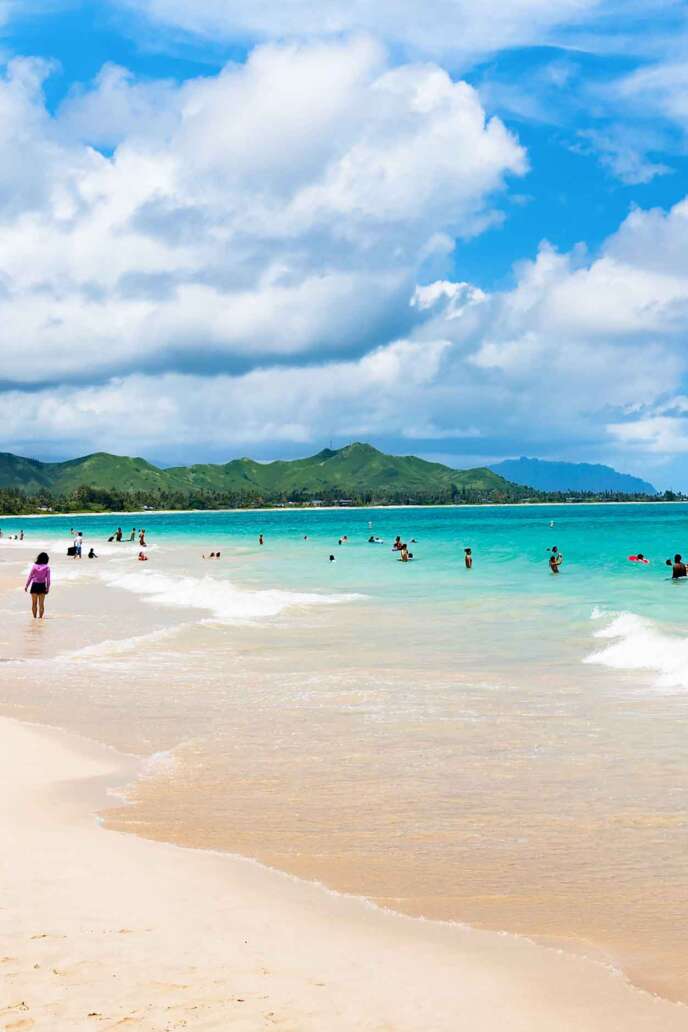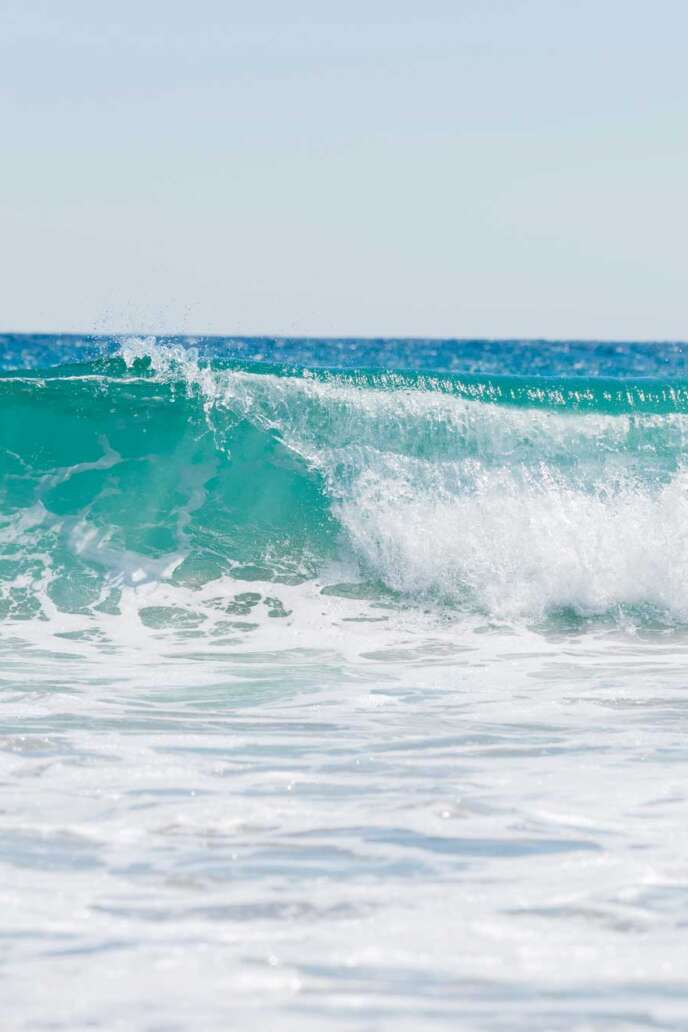Kapiolani Park or Queen Kapiʻolani Regional Park, is an oasis of tranquility amidst the bustling cityscapes of Hawaii. A crown jewel nestled between the shores of Waikiki and the regal silhouette of Diamond Head, the park is a tapestry of lush green landscapes, sun-dappled picnic spots, and recreational facilities that make it the perfect retreat for residents and tourists alike. This article will delve into the myriad of attractions and activities that make Kapiolani Park the epitome of outdoor enjoyment in Honolulu.
Highlights
- Kapiolani Park is a perfect buffer between Waikiki and Diamond Head, offering a beautiful setting and natural beauty.
- The park features sports fields, tennis courts, a playground, and paved paths for walking and jogging.
- It hosts community events, festivals, and concerts at the iconic Bandstand.
- Kapiolani Park is home to diverse flora and fauna, contributing to Honolulu’s outdoor paradise.
- The park plays a critical role in shaping the social and economic fabric of the Honolulu community.
History
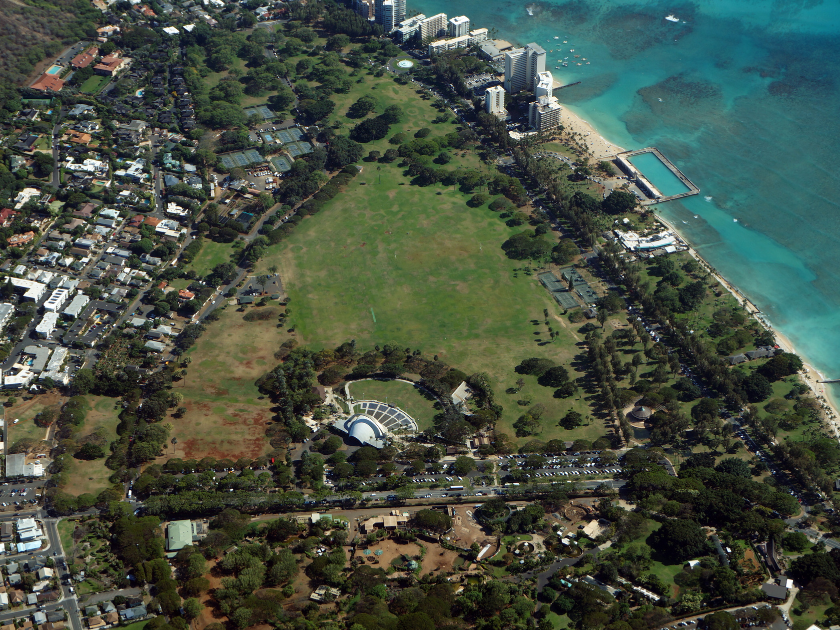
Kapiolani Park, established in 1877, is a testament to the rich cultural heritage and natural beauty of Honolulu. Originally a barren, dusty flatland, the park was named after Queen Kapiolani, the wife of King Kalakaua. This park has remained virtually unchanged over the years and offers a glimpse into the past when people would stroll over a bridge to reach Makee Island, now the entrance to the renowned Honolulu.
As the second oldest public park on Oahu, Kapiolani Regional Park holds a special place in the hearts of both locals and visitors alike. Its rich legacy as King Kalākaua’s polo playground dates back to the late 1800s. In 1877, King David Kalākaua himself declared this Royal Land as a public space, cementing its importance in our community. Since 1913, the City and County of Honolulu Department of Parks and Recreation have diligently maintained and preserved this expansive green oasis, ensuring it remains a cherished outdoor haven for all to enjoy. Kapiolani Regional Park is now part of a Public Charitable Trust, encompassing not only the park itself but also the Honolulu Zoo and the Waikiki Shell. This means that these beloved attractions are free and open to the public, allowing everyone to bask in their natural beauty and engaging activities.
Today, it serves as a perfect buffer between the vibrant Waikiki and the majestic Diamond Head. The park stands as a symbol of King Kalakaua’s legacy, preserving the history and culture of Hawaii while serving as a green oasis amidst the urban landscape. It not only offers a beautiful setting but also holds great historical significance due to its connection with indigenous Hawaiian culture and royalty. Steeped in tradition, Kapiolani Park gives visitors a true sense of place, showcasing the essence of Hawaii as a premier recreational resort. It is no wonder that this iconic park is often associated with the world-famous image of Hawaii.
Amenities and Features
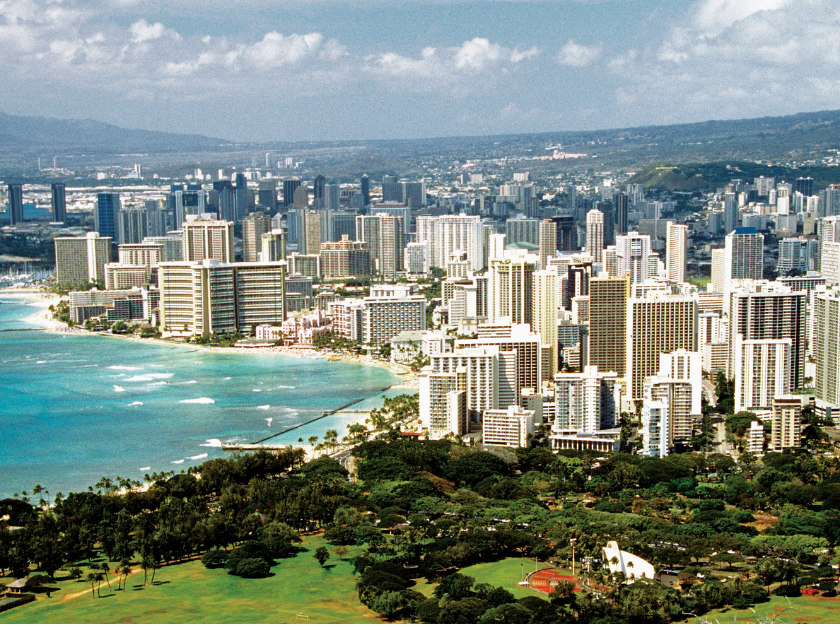
Kapiolani Park is home to a variety of top-notch facilities dedicated to sports and recreation. The park boasts numerous well-kept sports fields, perfect for soccer, baseball, and other team sports. These fields, coupled with the park’s open space layout, provide an ideal environment for both casual and competitive games. Notably, Kapiolani Park is also known for the iconic Bandstand, a historical structure often used for concerts, community events, and performances. The Bandstand, with its unique architecture and prime location, has become a popular gathering spot for locals and tourists alike. Located within the verdant expanse, the Honolulu Zoo offers visitors a chance to observe a wide variety of animal species in habitats designed to mimic their natural environments. Also complementing the park’s natural charm is the Waikiki Shell, an open-air concert venue known for its acoustics and breathtaking backdrop. Hosting a range of performances from music concerts to theatrical shows, the Waikiki Shell enriches the cultural experience for park-goers.
In addition, the park features professional-grade tennis courts that draw enthusiasts of all skill levels. These courts, nestled amidst the park’s lush greenery, offer users a pleasant, engaging environment for play. The availability of equipment rental and coaching services at the park further facilitates an enjoyable tennis experience. Besides these, Kapiolani Park offers a variety of other amenities. These include well-maintained restroom facilities, picnic areas equipped with tables and grills, a children’s playground, and paved paths perfect for jogging or strolls.
Things to Do
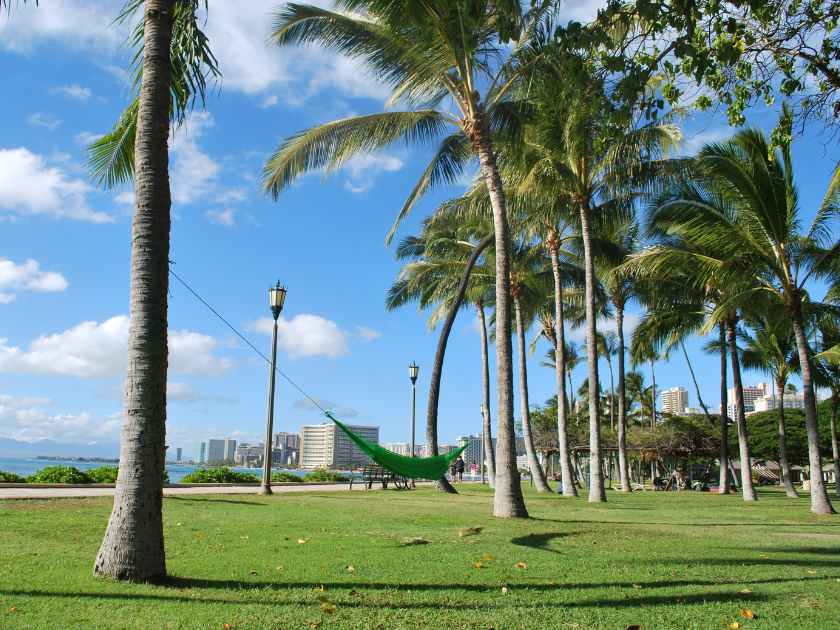
Stay Active with Everyday Activities
Kapiolani Park serves as a bustling hub of activity, hosting a broad spectrum of regular activities that cater to a wide audience. Jogging is a common sight in the park’s sprawling grounds, with its well-maintained paths offering a scenic route for both casual joggers and serious runners. The park’s picturesque setting also makes it a prime location for picnics. Groups of friends can often be found relaxing under the shade of the park’s towering trees, enjoying a meal amidst the park’s natural splendor. Families can enjoy a serene picnic or let children revel in the playground area. Sports enthusiasts are not left out; the park boasts various sports fields, accommodating activities ranging from soccer games to tennis matches. The park truly encapsulates the vibrant outdoor lifestyle of Honolulu, making it an outdoor paradise for all.
Visit the Honolulu Zoo
One of the most popular attractions in Kapiolani Park is the Honolulu Zoo. This 42-acre site is home to a vibrant collection of wildlife, including exotic species from tropical rainforests and savannahs. A visit to the zoo offers an engaging and educational day out, where you can observe animals in thoughtfully-designed habitats that closely mimic their natural surroundings. Don’t miss the chance to meet the enchanting orangutans, marvel at the majestic African elephants, or watch the playful lemurs leap from tree to tree. The zoo also organizes various interactive programs, making it a fun and informative destination for both children and adults.
Participate in Major Events held at Kapiolani Park
Kapiolani Park is a hub of community activity and hosts a diverse array of events throughout the year. Its spacious lawns and scenic Bandstand serve as the perfect backdrop for various outdoor festivals celebrating Hawaiian culture with music, dance, and food. The park is also renowned for its live concerts that feature local bands and musicians, providing residents and tourists with an authentic taste of Honolulu’s vibrant music scene. In addition, every Saturday, the park comes alive with a bustling farmers market. Here, local farmers and artisans gather to sell a wide range of products, from fresh produce to handmade crafts, making it a must-visit spot for those seeking to experience the local lifestyle and flavors of Honolulu.
Learn about the Park’s Biodiversity
Kapiolani Park boasts a diverse range of flora and fauna, contributing to its status as Honolulu’s outdoor paradise. Its expansive lush landscapes are dotted with a variety of tropical plants including palm trees, banyan trees, and hibiscus bushes, which lend the park a vibrant and exotic charm. In addition, it is home to an array of animal species. Birdwatchers can delight in spotting different types of local birds like the Hawaiian Nene goose or the exotic peacocks that strut around the park. The park’s ecology serves not only as a visual spectacle but also provides a rich educational experience about Hawaii’s unique biodiversity
The Kapiolani Park’s Role in Community
Kapiolani Park serves as the beating heart of Honolulu’s local community, providing a communal area where residents converge to enjoy outdoor activities, celebrate events, and create lasting memories. The park has become an essential part of people’s lives, being the venue for morning yoga classes, weekend football matches, and family picnics. It also hosts a variety of events and festivals, fostering a sense of community and promoting local culture. Moreover, the park contributes to the local economy, attracting tourists and supporting local businesses. In essence, Kapiolani Park plays a critical role in shaping the social and economic fabric of the Honolulu community.
Tips for Visiting Kapiolani Park
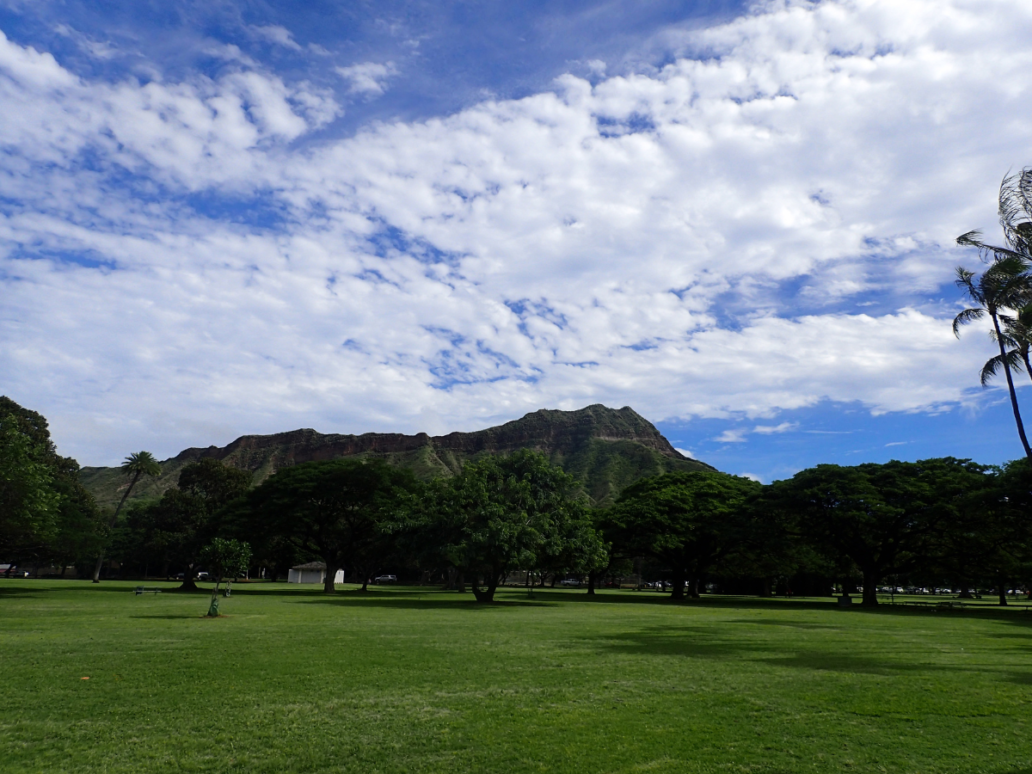
- Plan your visit ahead of time by checking the park’s operating hours and the weather forecast for Honolulu.
- Pack a picnic to enjoy in one of the park’s many picturesque areas.
- Bring your sports equipment if you plan to use the park’s sports fields or tennis courts.
- Attend one of the many events hosted at Kapiolani Park; check the park’s event calendar for details.
- Don’t forget sunscreen and hats for sun protection, as the Hawaiian sun can be intense.
- If you’re interested in wildlife, bring a pair of binoculars; Kapiolani Park is home to several bird species.
- Utilize public transportation or plan for parking, as the park can get busy, especially during events.
- Respect the park’s rules and regulations to ensure the area remains beautiful for all visitors.
Frequently Asked Questions (FAQs)
Kapiolani Park is a public park located in Honolulu, Hawaii. Known as Honolulu’s outdoor paradise, it offers a vast range of amenities and activities for residents and tourists alike.
Kapiolani Park is situated at the eastern end of Waikiki, just beyond the famous Diamond Head in Honolulu.
The park is home to sports fields, tennis courts, and the Bandstand. It also boasts walking paths, picnic areas, and beautiful landscapes, making it an ideal spot for outdoor activities in Honolulu.
Kapiolani Park hosts a plethora of activities, including sporting events, outdoor concerts at the Bandstand, picnics, and strolls.
Kapiolani Park is a hub for community events, including music performances, festivals, and farmers’ markets. It also often hosts sporting events like marathons and soccer tournaments.
Kapiolani Park encapsulates the spirit of Honolulu with its rich history, beautiful landscapes, and an array of activities. It’s a place where locals and tourists can engage with the outdoor beauty of Honolulu and enjoy recreational activities.
How to Get There
By Bus
TheBus, Honolulu’s public transportation service, offers frequent routes that stop near Kapiolani Park. Routes 19, 20, and 23 all stop at Kuhio Ave + Paoakalani Ave, which is a short walk away from the park. Check the TheBus website for the most up-to-date schedules and routes.
By Car
If you’re driving from downtown Honolulu, follow the HI-92 E (Ala Moana Blvd) which becomes Kalakaua Ave. Continue on this street until you reach Monsarrat Ave, where you’ll see the park on your right. There’s ample parking available around the park, including lots near the Bandstand and tennis courts. Be aware that it can get busy during peak times.
By Foot/By Bicycle
For those who are staying in the nearby Waikiki neighborhood, the park is surrounded by a network of walking and cycling paths. These are not only perfect for those living nearby who wish to walk or cycle to the park, but they also provide an excellent way to explore the park itself, meandering through its lush green fields and along the scenic coastline. Simply head towards the Diamond Head end of Waikiki and follow the coastline until you reach the park. Along the way, you’ll pass by the Honolulu Zoo and the Waikiki Aquarium, both of which are located within the park’s perimeter.
Pack your Picnic Basket and Bask in the Stunning Vistas!
Kapiolani Park isn’t just a park—it’s an embodiment of Honolulu’s spirit of Aloha. A visit to the park offers a chance to commune with nature, partake in recreational pursuits, and connect with the local community, making it a must-visit destination in Honolulu.


